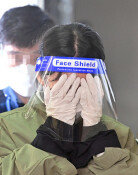First Aid

In an emergency situation, the first five to 10 minutes are crucial. A patients life might be saved depending on the measures taken. The best alternative is to call 911 and act quickly before the ambulance arrives. If you know how to tackle emergencies by situation, you might just become a savior.
There are many things that cause a person to faint. If the patient was dizzy, pale, broken out in a cold sweat, salivating excessively, and nauseous before fainting, parasympathetic nerve damage is the reason. In a situation like this, first the patient must be in a reclining position. The blood flow to the brain must return back to normal for the pulse and breathing to do so as well. If the patient does not lie down in time for more than 15 to 20 seconds, spasms will occur. This is different from epileptic fits, because there are no side effects such as headaches and coherency.
Epilepsy causes a person to collapse as well, accompanied by convulsions. Since the seizure only lasts a few minutes, you should remove all obstacles that the patient might be injured on and wait. Do not try to force the convulsions down, as it may hinder breathing. Loosen tight clothing or belts, and slide wooden chopsticks or other objects between the teeth to prevent the patient from biting down on his or her own tongue.
You can also lose consciousness from blood loss in the brain by being in a standing position for a long time or abruptly getting up. This occurs frequently to many people but patients with nerve damage or those who take blood pressure or diarrhea medication are more prone to it.
Regardless of etiology, it is important that you open the airway to restore respiration. Anything thats blocking the airway should be removed by placing the patient on his or her side.
If you cannot detect any signs of breathing, you must perform CPR. Lay the patient on a flat surface, tilt the head backwards and lift the chin to secure the airway. Then block the nose and breathe into the patients mouth two times.
If there are still no signs of life, use chest compression. Place your hands on the center of the chest and press down hard enough to feel that half the patients body is being compressed. Check to see if the patient is breathing while doing two rescue breaths for every 15 to 30 chest compression cycles.
For burns or chemical contact, place the affected area in cold water for three to five minutes. If the heat still remains, it means there is progressive skin damage. You should never try to remove clothing stuck to the skin.
In chemical contact cases, remove clothing and rinse in water for about 10 minutes. If there has been eye contact, spread the eyelids open and rinse in saline solution or under flowing water.
(Sources: Professor of Emergency Care at Samsung Medical Center Song Hyung-gon, Professor Oh Beom-jin at Asan Medical Center, and Professor Park In-chul at Severance Hospital.)
artemes@donga.com







